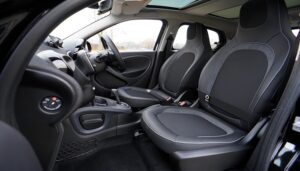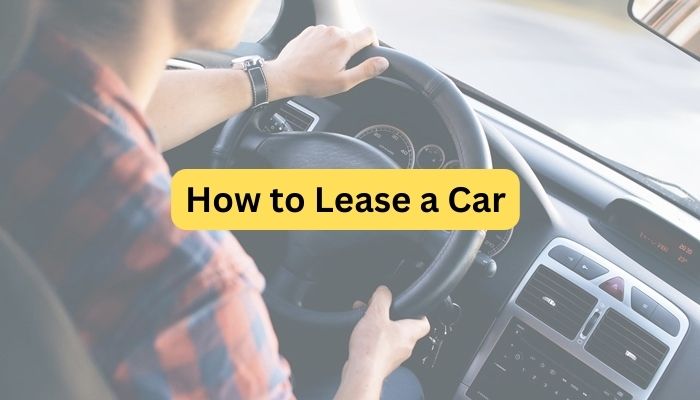10 Steps to Leasing a New Car – When you need a vehicle to get around, you have two basic options: buying one or leasing one. Leasing a vehicle is similar to renting an apartment in that you make monthly payments while enjoying temporary use of the vehicle.
What is a Car Lease?
A car lease allows you to drive a vehicle from a dealership for an agreed upon amount of time and miles, and pay for its usage rather than for the full purchase price of the vehicle.
10 Reasons Why You Are Broke And What You Should Do
You make monthly payments to be able to drive the car. The monthly payments are based on the car’s projected depreciation value over the course of lease term.
Pros of Leasing a Vehicle:
- Being able to drive a new or newer vehicle every few years
- Potentially lower monthly payments compared to financing a vehicle purchase
- Needing a smaller down payment to qualify for a lease versus a car loan
- Having the option to purchase the vehicle at the end of the lease term
Cons of Leasing a Vehicle
- You will be limited in the number of miles you can drive, such as 10,000 or 15,000 per year.
- Penalties for exceeding the mileage limits can be steep.
- You may also be penalized for excessive wear and tear.
- Getting out of a lease early if you need to can prove expensive.
10 Steps to Leasing a New Car:
1. Is leasing right for me?
Even though monthly lease payments are usually lower than car-loan payments, leasing may be more expensive than an auto loan in the long run.
When you take out a car loan, you’ll pay off the car over time. Driving a vehicle you own can reduce your long-term costs since you’ll no longer have a monthly payment once your car loan is paid off. But if you lease a car, you won’t be building equity in a vehicle.
Depending on your desires and lifestyle, it can still make sense to lease instead of buy. Here are a few times to consider leasing.
- You want to drive new cars. If you exclusively lease new vehicles, you’ll enjoy the benefits of a new car without the hassle of selling a used vehicle each time you trade up.
- You don’t want to own a car. If you view car ownership as a hassle, a lease may be a good choice for you. Lease agreements may include service contracts that can make dealing with maintenance and repairs more convenient.
- You need a car for a short time. Perhaps you’re living somewhere short term and need a car. In that case, taking out a two-year lease may make more sense than buying and selling a car.
2. Choosing the Car to Lease:
The car you choose will of course determine the amount you’ll pay for a lease. The goal is to lease a car that has either a low cap cost or a high residual value—and ideally, it will have both.
To reach the first goal of a low cap cost (which is the negotiated price of the car, remember), look for the low-hanging fruit at local dealerships. Do some research to learn which vehicles are nearing the end of their product cycles. If there’s a new model on the horizon, it’s a great time to get a good price on the outgoing car. Just remember that it’s only a good deal if it’s a good car that meets your needs and budget.
3. Test drive a variety of cars:
Even though you aren’t making a long-term investment to purchase a vehicle, you still want to love your car. Be sure to test drive several cars, even if your sights are set on one model. It could be the right car wasn’t even on your radar.

Visit car dealerships
When it’s time to start shopping in person, visit a car dealership. You’ll learn what’s available and confirm your lease cost calculation is correct. Visit multiple dealerships and shop around for the best deals.
4. Know Your Mileage:
Before you lease a car, it’s crucial to consider how far you typically drive. A standard lease contract which allows for 12,000 miles a year or 36,000 miles for a typical three-year lease. If you drive further than your set miles, you may be charged an excess mileage fee for each additional mile — anywhere from 10 to 25 cents per mile — when the lease ends. This can be costly for high-mileage drivers.
Note that you can buy additional miles upfront if you think you’ll be over the allotted miles.
5. Know How You Use the Vehicle:
If you know you tend to be hard on cars, be aware that you’ll likely pay for excessive wear and tear at the end of the lease. That can include things like the ride-hailing services mentioned above, smoking in the vehicle or even carrying a pet in the car. Parking on the street or in lots where the car gets scratched and dinged could cost you too.
Some leases have prohibitions on certain activities, so read the contract carefully. For instance, it might not allow use of the car for “business purposes,” which again includes ride sharing, as well as car sharing or package delivery services that might be available in your location.
If you’re planning to customize your vehicle, such as putting a ladder rack on a pickup truck, you’ll have to remove it before you return the car at the end of the lease.
6. Secure financing:
In addition to a down payment, figure out how much you can pay monthly for a lease agreement. If the car that you’ve been driving in your dream is, on average, $250 dollars over your monthly maximum, it probably won’t make sense to go into debt in order to finance the car. So hammer out a budget, stick to it, and find out what options you have based on your available money.
7. Get quotes from dealers:
Once you have a target sales price, contact multiple dealers to request and compare car price quotes. Contacting dealers by phone or via email in lieu of going to a physical car lot can alleviate some negotiating stress and make it easier to compare quotes without feeling pressured to commit to a car or dealer yet.
Once you’ve asked for price quotes, compare them to the estimates you received from pricing guides, and to your budget, to determine what the best option is for you. You can also shop around your lowest offer to other dealers to see if they can beat the price.
8. Set the lease terms:
When you decide what vehicle to lease and what dealer to lease from, the next step is to set and understand the terms before signing a deal. Keep in mind that you can always negotiate the terms of your lease. Also, be sure to ask about the interest rate you’ll be charged, which will impact your monthly payment. In leasing, the interest rate is called the lease factor or money factor. Money factors are displayed differently from interest rates. A 6% interest rate would be displayed as 0.0025, for example. (To express a money factor as a percentage, multiply it by 2,400).
9. Negotiate the Price:
Unless you are getting a manufacturer-subsidized lease deal, you’ll want to negotiate the capitalized cost just as you would if you were haggling over the purchase price to buy the vehicle. Some consumers believe that the lease price is nonnegotiable, but that’s simply not true. Research the cost of the vehicle and what others are paying for it before heading to the dealership. Some experts recommend settling on a purchase price before telling the dealer that you are considering leasing
10. Close out the deal:
Once you’re happy with the terms of your lease agreement, you can officially close the deal. At this point, you can sign the lease agreement, pay the down payment and fees and drive your new ride off the lot!
Can You Lease a Car With Bad Credit?
If you have a bad credit score of 600 or lower, you’ll likely have trouble getting approved for an auto lease. However, that doesn’t mean it’s impossible to lease a car with less-than-stellar credit. Lessors consider other factors about your financial situation, such as your current debt-to-income ratio (DTI) and employment history, as well as your credit score.
What happens at the end of my car lease?
When a lease is up, you have two options.
- Buy the car. Most of the time, leases give you the option to buy the car at the end of the lease. If you don’t have the cash to pay for the car, you may be able to apply for a lease buyout loan to buy it.
- Settle the account and walk away. The end of a car lease may be as simple as returning the car to a dealership and walking away. But in some cases you may have to pay if you drove more than a certain mileage limit, which is usually between 10,000 and 15,000 miles a year. The exact fees for excess mileage will be defined in the lease contract. You may also have to pay for excessive wear and tear if you turn in the vehicle in poor condition.

